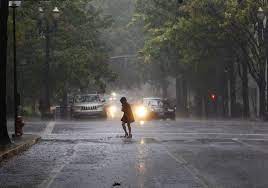Portland, Oregon, is renowned for its vibrant cycling culture, with thousands of residents relying on bicycles for daily transportation and recreation. However, the city’s notoriously wet weather can present challenges for even the most experienced cyclists, increasing the risk of accidents and injuries on slick roads and trails.
As a cyclist in Portland, it’s essential to be prepared for riding in rainy conditions and to know your rights and options if you are involved in a weather-related accident. Seeking the guidance of a Portland attorney for cycling accident victims can help you navigate the legal process and obtain the compensation you deserve for your injuries and losses.
Understanding the Risks of Wet Weather Cycling
Cycling in wet weather comes with a unique set of risks that can increase the likelihood of accidents and injuries. When roads and trails are wet, tires have less traction, making it harder to brake, turn, and maintain control of your bike. Wet surfaces can also hide hazards like potholes, debris, and slick leaves or moss, which can cause you to lose balance or crash.
In addition to the physical risks, cycling in wet weather can also impair your visibility and the visibility of other road users. Rain, fog, and mist can obscure your view and make it harder for drivers to see you, especially during low-light conditions. This can increase the risk of collisions with vehicles, particularly at intersections and when riding on busy streets.
Preparing Your Bike for Wet Weather Riding
To minimize the risks of wet weather cycling, it’s essential to prepare your bike for the conditions. Start by installing fenders on your front and rear wheels to prevent water and debris from spraying up and obscuring your vision or soaking your clothing. Make sure your tires have adequate tread and are inflated to the proper pressure to maximize traction and avoid flats.
Consider investing in waterproof or water-resistant gear, such as a cycling jacket, pants, gloves, and shoe covers, to keep you dry and comfortable during your ride. Use a waterproof cover or bag to protect any items you need to carry, such as a phone, wallet, or change of clothes. Finally, make sure your bike is equipped with working lights and reflectors to increase your visibility to other road users.
Adapting Your Riding Technique for Wet Conditions
Cycling in wet weather requires a different approach than riding on dry roads. To maintain control and avoid accidents, it’s essential to adjust your riding technique to suit the conditions. Start by slowing down and allowing extra time to brake and turn, as wet roads can significantly increase your stopping distance.
When cornering or turning, take a wider line and lean your bike, rather than your body, to maintain traction and avoid skidding. Avoid sudden movements or hard braking, which can cause your wheels to lock up or slide out from under you. If you do start to skid, gently release your brakes and steer into the skid to regain control.
Avoiding Hazards and Obstacles on Wet Roads
Wet roads can hide a variety of hazards and obstacles that can catch cyclists off guard. To stay safe, it’s essential to be vigilant and proactive in scanning the road ahead for potential dangers. Watch out for potholes, cracks, and debris that may be obscured by standing water or puddles, and avoid riding through them whenever possible.
Be particularly cautious when riding over metal surfaces, such as manhole covers, grates, and railroad tracks, as these can become extremely slippery when wet. If you must ride over them, approach at a perpendicular angle and avoid braking or turning until you have cleared the obstacle. Similarly, use extra caution when riding on painted lines or markings, as these can also become slick in wet conditions.
Increasing Your Visibility in Low-Light and Rainy Conditions
One of the greatest risks of cycling in wet weather is reduced visibility, both for cyclists and other road users. To increase your visibility and reduce the risk of collisions, it’s essential to use appropriate lighting and reflective gear. Make sure your bike is equipped with a bright, white front light and a red rear light, and use them whenever riding in low-light or rainy conditions.
Wear bright, reflective clothing or accessories, such as a vest, jacket, or ankle bands, to make yourself more visible to drivers and pedestrians. Consider adding reflective tape or stickers to your bike frame, wheels, and pedals to increase your overall visibility. Finally, always use hand signals when turning or stopping, and make eye contact with drivers to ensure they see you before proceeding through intersections.
Knowing Your Rights and Options as a Cyclist in Portland
Despite your best efforts to stay safe, accidents can still happen when cycling in wet weather. If you are involved in a collision with a vehicle or another cyclist, it’s essential to know your rights and options as a victim. Under Oregon law, cyclists have the same rights and responsibilities as drivers and are entitled to seek compensation for injuries and losses caused by another party’s negligence.
If you are injured in a cycling accident, seek medical attention immediately and report the incident to the police. Gather as much evidence as possible, including photos of the scene, witness statements, and insurance information from the other parties involved. Keep detailed records of your medical treatment, expenses, and any time missed from work or other activities.
Seeking Legal Guidance from a Portland Attorney for Cycling Accident Victims
Dealing with the legal process after a cycling accident can be complex and overwhelming, especially if you are dealing with injuries and financial losses. An experienced attorney who specializes in representing cycling accident victims can provide invaluable guidance and support during this challenging time.
A skilled cycling accident attorney can thoroughly investigate the circumstances of your accident, gather evidence to support your claim, and negotiate with insurance companies on your behalf to ensure you receive the full compensation you deserve. They can also represent you in court if necessary, fighting tirelessly to protect your rights and interests every step of the way.
Staying Safe and Empowered on Portland’s Wet Roads
Cycling in Portland’s wet weather can be a challenging but rewarding experience, allowing you to stay active and connected to the city’s vibrant cycling culture year-round. By preparing your bike, adapting your riding technique, and increasing your visibility, you can minimize the risks of accidents and injuries on slick roads and trails.
However, if you are involved in a cycling accident caused by another party’s negligence, it’s crucial to know that you have rights and options as a victim. Seeking the guidance of a skilled lawyer who specializes in representing cycling accident victims can help you manage the legal process with confidence, and obtain the compensation you need to recover from your injuries and move forward with your life.
.





Be First to Comment